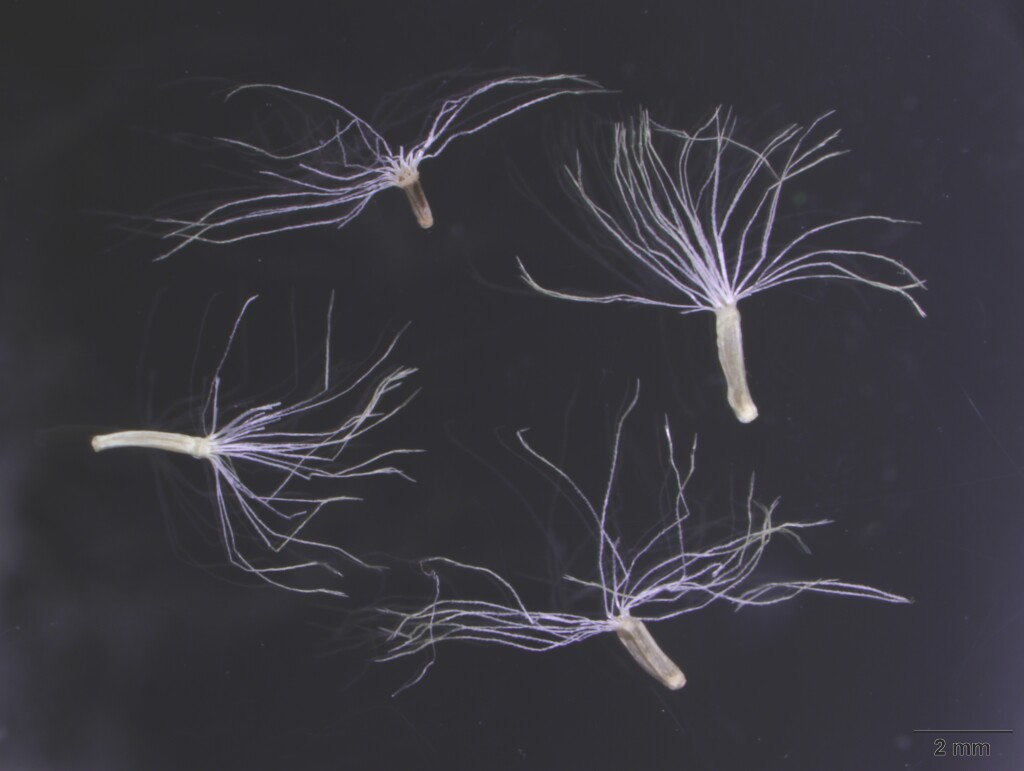Coronidium monticola
N.G.WalshAscending to erect, rhizomatous perennial to c. 35 cm high; stems often freely branched above base, occasionally simple, densely cottony, glands present but usually obscured. Leaves sessile, obovate to oblanceolate, 20–50 mm long, 3–12 mm wide; apex obtuse to acute, shortly mucronate; base attenuate; upper surface smooth, sparsely to densely cottony; lower surface cottony to densely woolly, with many glands, but these mostly obscured by indumentum; margins recurved, rarely flat. Capitula solitary, depressed-hemispherical, 18–30 mm diam. at anthesis; involucre 7–10-seriate; bracts wrinkled; outer bracts woolly toward base, straw-coloured to golden-brown; intermediate bracts oblanceolate to spathulate, 10–13 mm long, clawed, opaque, bright yellow. Florets numerous, the outer 2–4 series of female-only florets. Cypselas 2–2.5 mm long, 4-ribbed, glabrous, brown or grey with pale longitudinal ridges; pappus bristles 15–25, c. free, 4–6.5 mm long, white, those of female florets complete or somewhat reduced centrifugally. Flowers Jan.–Mar.(–Apr.).
Wim, GipP, NIS, EGU, HSF, HNF, MonT, VAlp. Also NSW, ACT, Tas. Occurs through higher parts of the Great Dividing Range, east of Melbourne, usually above 1000 m. and often in gravelly or rocky, well-drained soils.
In general, plants at higher altitudes are more densely cottony, often appearing grey-white overall, and usually of reduced stature and less branched compared to those at the lower part of the altitudinal range (Walsh 2014).
 Spinning
SpinningWalsh, N.G. (2014). A revision of the Coronidium scorpioides (Asteraceae: Gnaphalieae) complex.. Muelleria 32: 16–33.

